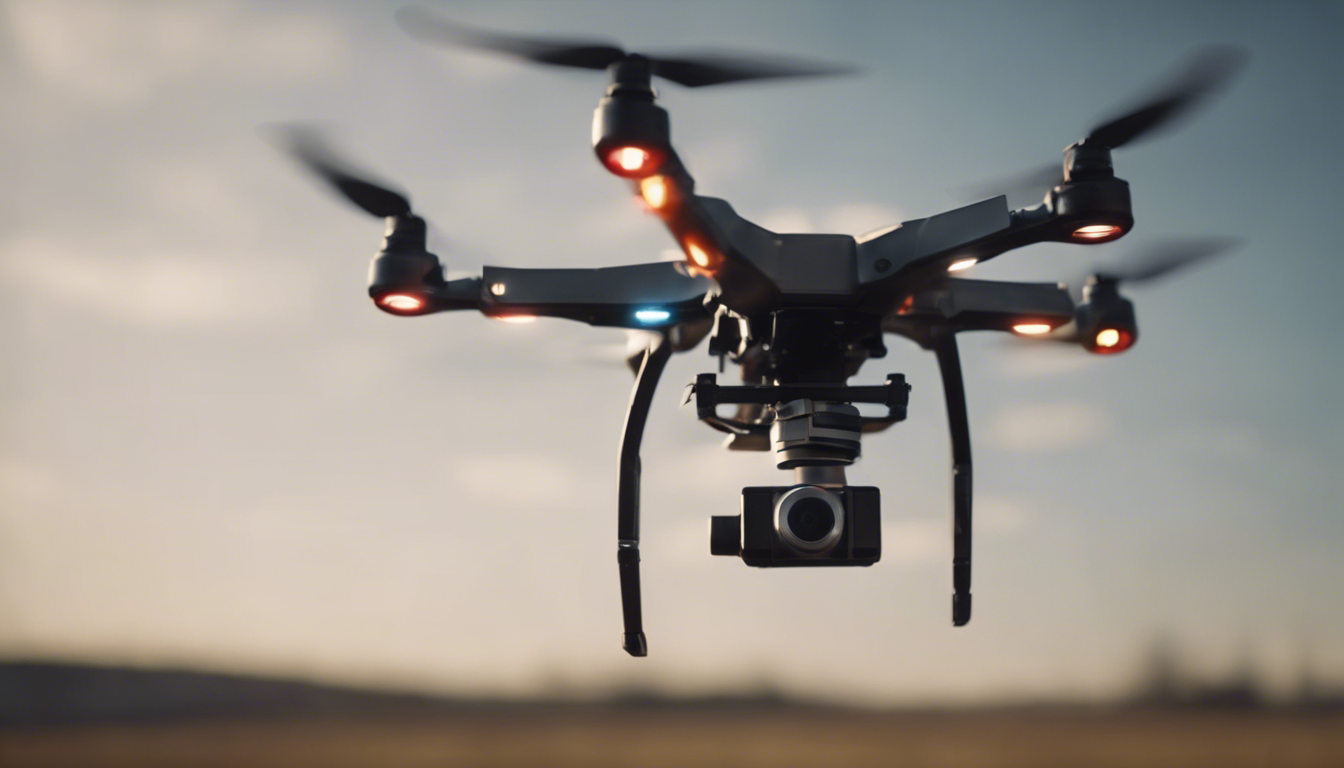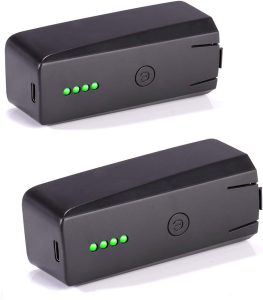
The Importance of Drone Flight Simulation Training
When it comes to flying drones, practice makes ideal. But before you take your drone out for a spin in the real world, it’s important to get some training under your belt. That is where drone flight simulation training comes in.
Flight simulators allow aspiring drone pilots to learn the ins and outs of flying without the risk of crashing an expensive piece of equipment. It is the ideal way to get comfortable with the controls and build confidence before taking to the skies.
Did you know that many drone pilots use simulators to practice flying in different weather conditions? That is right – simulators can mimic everything from high winds to rain, giving pilots the chance to learn how to navigate through challenges they may face in real life.
Not only does simulation training help with technical skills, but it also allows pilots to become familiar with the rules and regulations of drone flying. Many simulators include scenarios that require pilots to follow specific guidelines, helping them to avoid potential fines or legal trouble.
“Practice doesn’t make ideal, ideal practice makes perfect.” – Vince Lombardi
So whether you’re a hobbyist or looking to become a professional drone pilot, don’t underestimate the importance of flight simulation training. It could mean the difference between a smooth flight and a crash landing.
Types of Drone Flight Simulators Available
When it comes to drone flight simulators, there’s quite a variety to choose from. Each type has its own unique features, catering to different levels of experience and training needs. Let’s dive into the most popular ones:
First up, we have consumer-grade simulators. These are typically more affordable and accessible for hobbyists or those just starting out. They often have simple to operate interfaces and offer a basic level of simulation. You’ll be able to fly virtual drones in different environments, work on your controls, and even play around with camera angles. However, don’t expect the same level of complexity or realism as higher-end options.
Next, there are professional-grade simulators. These are designed for serious pilots or those looking to pursue a career in drone piloting. They offer much more detailed environments, realistic weather conditions, and advanced flight dynamics. Some even provide hardware that mimics actual drone controllers, adding an extra layer of realism to the training.
For those interested in racing drones, there are simulators specifically for that too! Racing simulators focus on speed, agility, and precision. They provide tracks that replicate real-world drone racing courses, allowing pilots to practice without the risk of breaking their drones (or the bank).
Did you know that some drone flight simulators can be used with virtual reality headsets? This immersive experience takes simulation training to a whole new level!
If you’re flying drones for cinematography purposes, there are simulators that offer aerial photography and videography training. These simulators emphasize camera control, helping future drone filmmakers learn how to capture stunning aerial shots.
Finally, we’ve got military-grade simulators. Though not accessible to the general public, they are worth mentioning. These are used by defense forces around the world to train operators for reconnaissance and combat missions. They replicate real-world missions and scenarios with a high level of detail and accuracy.
Regardless of which type of simulator you opt for, one thing’s for sure: using a flight simulator can be a fun and effective way to improve your drone piloting skills! So why not explore all the options and find one that suits your training needs? Happy virtual flying!
Benefits of Using Flight Simulators for Drone Pilot Training
When it comes to drone pilot training, there are numerous benefits to using flight simulators. For starters, simulators give pilots the ability to practice their flying skills in a safe and controlled environment. That’s particularly crucial for beginners who may feel nervous about operating a drone for the first time. A simulator allows them to make mistakes without the fear of damaging their drone or causing injury to themselves or others.
Another advantage of using simulators is the cost savings. Flying a real drone can be expensive, especially if you consider the potential for crashes and the cost of repairs. Simulators eliminate this financial risk. That’s especially beneficial for those who are testing out drone flying as a hobby or are considering a career in drone piloting – it is a way to dip their toes in the water without making a significant financial commitment.
Simulators also provide a wider range of flying scenarios than one might encounter in real life. Pilots can practice flying in various weather conditions, at different times of the day, and in various landscapes – all without leaving the comfort of their home. This diverse experience is invaluable when it comes time to fly a real drone, as pilots will feel prepared for any situation that may arise.
“The more you sweat in practice, the less you bleed in battle.” – Richard Marcinko
Additionally, simulators can aid in muscle memory and hand-eye coordination. Constant practice on a simulator can make the movements necessary to control a drone second nature, leading to smoother and more confident flying when handling a real drone.
Perhaps one of the most significant benefits is that simulators allow pilots to become intimately familiar with the drone’s controls and functions. They can experiment with different settings and modes, learn how each function affects flight, and gain an understanding of how to adjust these settings on the fly – a skill that can be lifesaving during an unexpected event in an actual flight situation.
Using flight simulators for drone pilot training offers a high number of advantages, from cost savings and safety to diverse practicing opportunities and better control familiarity. These benefits make flight simulators an essential tool for anyone looking to get into drone flying – whether it be for pleasure or as a professional pursuit.
How to Choose the Right Drone Flight Simulator
Finding the right drone flight simulator can be akin to choosing the ideal drone – it requires thoughtful consideration of your needs and what you hope to achieve. Whether you’re a beginner or a seasoned pilot, several factors should influence your decision.
Firstly, consider the compatibility of the simulator with your hardware. You might have a powerful computer, but if the simulator isn’t compatible, it won’t perform well. Check the system requirements and ensure they match your setup. If you’re using a specific type of controller or VR headset, look for simulators that support these devices for a seamless experience.
Another important factor is the realism and accuracy of the simulation. If you’re serious about improving your drone piloting skills, you’ll want a simulator that closely mimics real-world physics and drone behavior. Look for simulators that offer realistic environment graphics, changing weather conditions, and accurate drone models.
Moreover, think the variety of training scenarios and environments available. A good simulator should offer a range of landscapes and situations to practice in, from urban cityscapes to rural countrysides. It should challenge you with different obstacles and allow you to customize these scenarios to match your training needs.
The ease of use is also vital. A user-friendly interface ensures you spend more time flying and less time fumbling with settings. Make sure the simulator you choose has clear instructions and accessible menus.
If given the truth, the public can be depended upon to meet any national crisis. The great point is to bring them the real facts… and beer. – Abraham Lincoln
Finally, think your budget. While you don’t want to skimp on quality, ensure that the simulator offers good cost-effective. There are free and paid options available, so weigh up the features offered against the price to make the best decision.
Selecting the right drone flight simulator may require a bit of research and trial-and-error, but it is worth it to ensure you get the most out of your flight training experience. Prioritize compatibility, realism, variety, ease of use, and cost when making your choice. Happy flying!
Tips for Incorporating Flight Simulators into Your Training Program
When incorporating flight simulators into your drone training program, it is crucial to create a structured routine that reflects the goals you wish to achieve. Start by setting clear objectives for each practice session – whether it’s mastering a new maneuver, improving reaction times, or experimenting with camera settings. Make sure these objectives are challenging yet achievable.
It’s also essential to keep your training sessions consistent and frequent. Regular practice on a simulator allows you to continually build upon your skills and reinforces what you’ve learned. Ponder carving out a specific time each day or week dedicated solely to simulator training.
Remember that practice is not just about repetition; it is about deliberate practice. Pay attention to the areas you’re struggling with and focus on improving those weaknesses. You can even record your simulator sessions to review and analyze later, or seek feedback from more experienced pilots.
Mixing up your training is key! Don’t just stick to one environment or scenario. By varying the conditions and challenges in the simulator, you better prepare yourself for the unpredictable nature of real-world drone flying.
Incorporating real-world scenarios into your simulator training can also be highly beneficial. If you’re training for a specific job or mission, try to replicate those conditions as closely as possible. For instance, if you’re practicing for aerial photography, focus on perfecting your camera movements and capturing techniques.
Don’t forget to use the metrics and analytics that many simulators provide. These tools can offer insights into your performance and progress, highlighting areas where you excel and where there’s room for improvement. By following these tips and dedicating time to practice, you’ll be on your way to becoming a proficient drone pilot.
